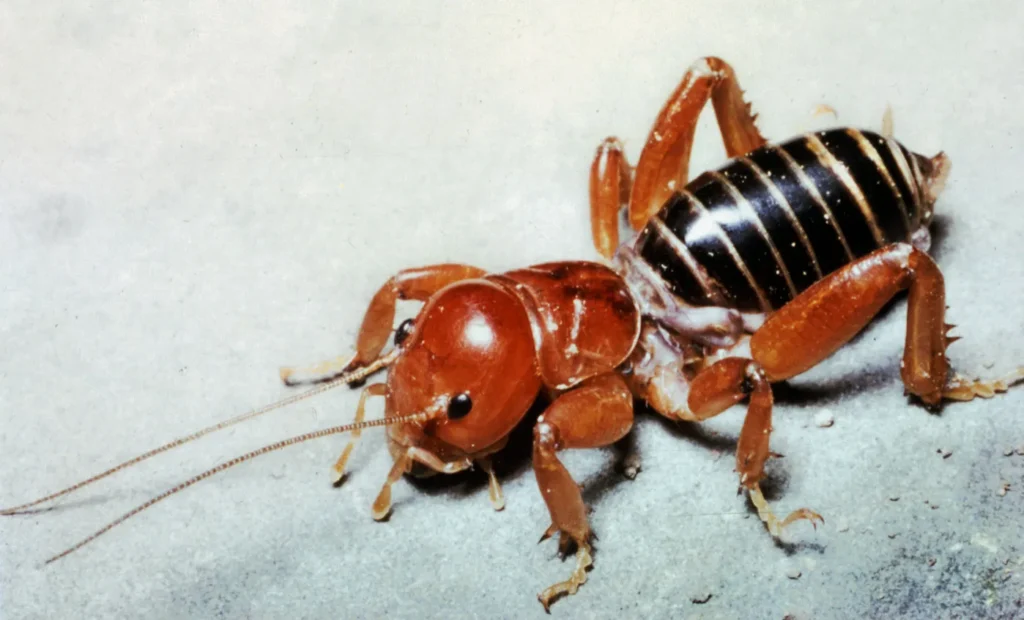In the world of insects, there are creatures that fascinate and sometimes even terrify humans with their unusual appearance and behaviors. One such creature is the Jerusalem cricket. Often misunderstood and surrounded by myths, this insect has captured the curiosity of entomologists and nature enthusiasts alike. In this article, we’ll delve deep into the world of the Jerusalem cricket, exploring its habitat, physical characteristics, behavior, and the myths and facts surrounding this enigmatic insect.
Introduction to the Jerusalem Cricket
The Jerusalem cricket, scientifically known as Stenopelmatus fuscus, belongs to the family Stenopelmatidae. Despite its name, it is neither a cricket nor is it native to Jerusalem. Instead, it is commonly found in the western United States and parts of Mexico. These insects are also known by various other names, including potato bug, child of the earth, and niña de la tierra (Spanish for “child of the earth”).
Habitat and Distribution
Jerusalem crickets are primarily found in regions with dry, sandy soil, such as deserts, grasslands, and scrubland areas. They are nocturnal creatures and spend the majority of their time underground, emerging at night to forage for food. While they are most commonly found in the western United States, they can also be found in parts of Mexico and Central America.
Physical Characteristics
One of the most striking features of the Jerusalem cricket is its appearance. These insects are large and robust, measuring up to two inches in length. They have a rounded, bulbous head with powerful jaws, which they use for digging and crushing their prey. Their body is covered in a tough exoskeleton, which is typically dark brown or black in color, providing them with protection from predators.
Behavior and Diet
Despite their fearsome appearance, Jerusalem crickets are not aggressive towards humans and rarely bite unless provoked. They are omnivorous creatures, feeding on a variety of plant matter, insects, and even small vertebrates. Their diet may include roots, tubers, seeds, and carrion, making them important scavengers in their ecosystem.
Burrowing Behavior
Jerusalem crickets are skilled burrowers and spend much of their time underground. They dig elaborate tunnels and chambers in the soil, which serve as both shelter and a place to lay their eggs. These burrows can extend several feet underground and are often interconnected with multiple entrances and exits.
Communication
While Jerusalem crickets do not have ears in the traditional sense, they are capable of detecting vibrations through specialized structures on their legs. They use these vibrations to communicate with each other, particularly during mating rituals. Male crickets produce rhythmic drumming sounds by rubbing their wings together, which can attract females and deter rival males.
Myths and Misconceptions
The Jerusalem cricket has long been the subject of myths and misconceptions, fueled by its unusual appearance and nocturnal habits. One of the most persistent myths is that these insects are venomous and capable of inflicting a painful bite. However, this is not true. While Jerusalem crickets do possess powerful jaws, they are not venomous and are generally harmless to humans.
Cultural Significance
Despite their fearsome reputation, Jerusalem crickets hold cultural significance in certain indigenous communities. In some Native American cultures, they are considered symbols of fertility and abundance and are believed to bring good luck. Conversely, in Mexican folklore, they are sometimes associated with death and are thought to be omens of bad luck.
Conservation Status
While Jerusalem crickets are not considered endangered, their populations may be threatened by habitat loss and environmental degradation. As human development encroaches on their natural habitat, these insects may struggle to find suitable places to burrow and forage for food. Additionally, pesticide use and other forms of chemical pollution can have detrimental effects on their populations and the ecosystems they inhabit.
Conclusion
The Jerusalem cricket is a fascinating and misunderstood insect that has captured the imagination of people around the world. Despite its fearsome appearance, it plays a vital role in its ecosystem as a scavenger and soil engineer. By dispelling myths and misconceptions and gaining a better understanding of these creatures, we can appreciate the unique role they play in the natural world and work to conserve their habitats for future generations to enjoy.







